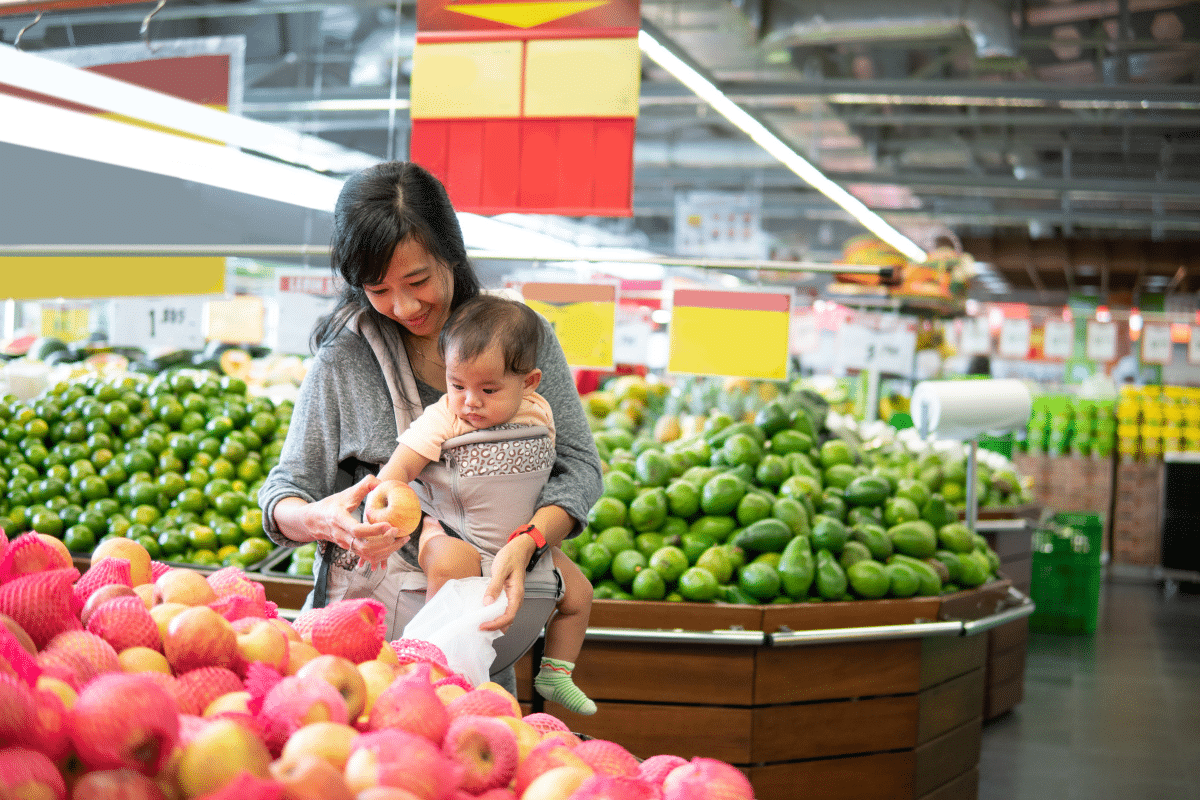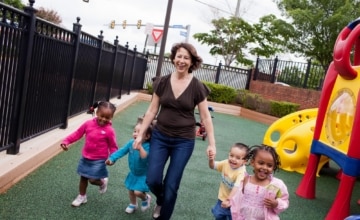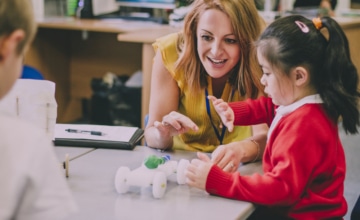It may seem like 2- and 3-year-olds are too young to learn about math, but they’re not! Try these tips to learn about early math concepts during a routine trip to the grocery store.
Early math concepts provide children with a strong foundation on which to build new, more complex math skills as they grow. Foundational concepts like number knowledge, understanding more and less, and simple addition/subtraction are accessible for these young children. Age-appropriate exploration into spatial awareness (where an object is in space, in relation to other people and objects), measurement, shapes, and patterns are also precursors to later math skills.

- Point out the signs hanging from the ceiling that show numbers for the different aisles—focus on 1, 2, 3 to start.
- Count items that you put in your cart. Focus on numbers up to 3.
1 carton of eggs, 2 boxes of cereal, 3 bananas in the bunch. - Count how many there are if you add one more item to your cart: We had 2 boxes of tissues, but I am going to buy 1 more. That makes 1, 2, 3!
- Use the word more: Let’s buy more apples. Compare using more: Look at our bag of onions and our bag of peppers. We bought more onions.

- Describe items using color names: Red and green apples, a yellow box of cereal, or brown bread.
- Compare temperature. Use warm when you get to the rotisserie chicken, and cold on the ice cream aisle.
- Use early math concepts to compare sizes of fruits and vegetables. Big grapefruit, small blueberries. Big broccoli, small green beans.
- When carrying groceries, talk about which bags are light and which are heavy.

- Notice the shape of cheese! Can you find cheese in the shape of a circle, square, and triangle? Name each one!
- Notice the shapes of objects in the supermarket: floor tiles may be squares, wheels on grocery cart look like circles, and more.
- In the paper goods aisle, point out square napkins and paper plates that are circles.
- In the frozen foods, can you find a square box or a frozen pizza shaped like a circle? Point to and each and name its shape.

- Use early math concepts to point out position words as you shop: Next to, on top, behind, in, out. Our cereal is on the top shelf. The bread is next to the peanut butter.
- Starting at 24-26 months, ask your child to show you where a specific item is. Then describe the location: That’s right, your cereal is on the middle shelf.
- When you check out, use the position words in and out: The cookies are in the cart. Let’s take them out and put them on the belt.
- When you put items away at home, talk about where each one goes: The oatmeal goes on top of the counter. The meat goes into the freezer.

- Point out how items are sorted by color—red peppers in one bin, orange in another. Red cans of soup on one shelf, blue on another. Sorting is an important early math concept.
- Starting at about 24 months, hold up an item, like a tissue box or can of tomatoes. Ask your child to find a match on the shelf or in your cart.
- Look at the salad bar together and notice how all the items are sorted carefully into their own bins. Name each item and describe its color or taste.
- Explain the pattern of your day. Talk with your child about what will happen next: pay for the groceries, put them in a bag, and then…?
Check out more early math resources from ZERO TO THREE for more ideas on how to make everyday moments count.






